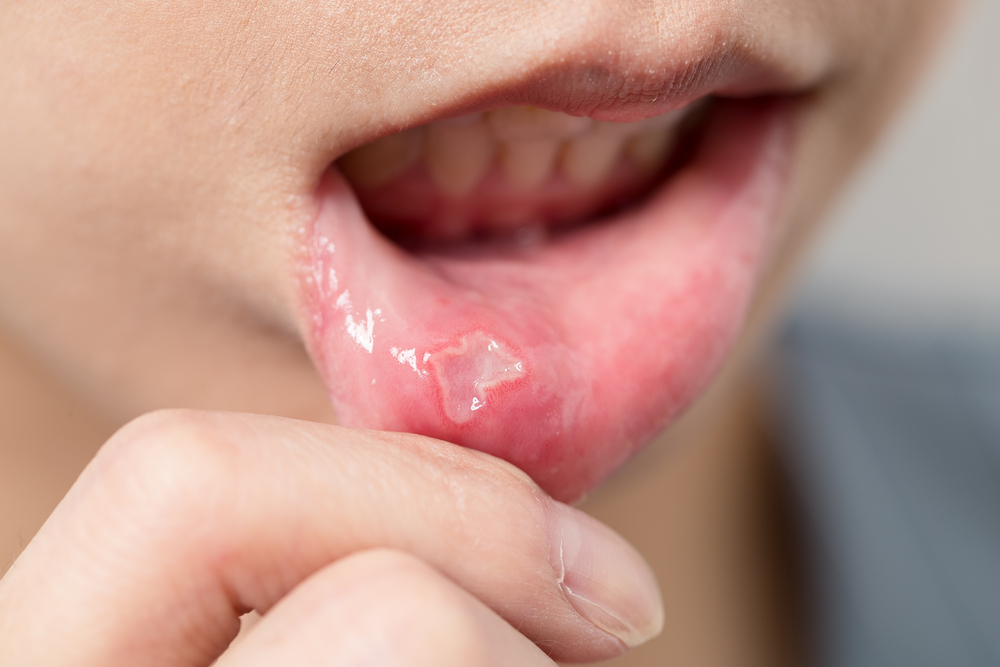Toothbrush Tips for Cold and Flu Season
Cold and flu season has arrived, and we bet you've stocked up on cough drops, tissues, and hand sanitizer. But have you thought about your toothbrush? While proper toothbrush hygiene...

Small, painful ulcers that appear on the inside of the mouth are commonly known as canker sores. While canker sores can be uncomfortable, especially while talking or eating, they aren’t considered a dangerous or serious medical issue. Read on to learn more about how to identify a canker sore, signs it may be something more serious, and how to prevent them from being a recurrence in your life.
Canker sores have the appearance of small white or yellow-shaped ulcers that can develop on the tongue, gums, or inside of the cheeks and lips. This type of mouth sore is typically accompanied by a burning or tingling sensation on and around the ulcer. Consuming certain foods, like citrus and acidic fruits, can increase pain or discomfort. Unlike cold sores, canker sores are not contagious and will only develop inside the mouth.
Canker sores can be caused by a variety of factors, including:
Any pain and discomfort from canker sores typically last one to two weeks. Over-the-counter pain medication can alleviate this type of discomfort while the sore heals. Utilizing a warm salt water rinse can shorten the healing process while also providing relief. Avoid spicy and citrus foods until the sore is fully healed.
One can do several things to prevent the recurrence of canker sores in the future. The easiest step is to avoid eating foods that have proven to irritate your mouth. Foods that are spicy or high in acidity can both trigger canker sores.
Another easy way to prevent future canker sores is to brush with a soft-bristled toothbrush following meals. Hard-bristled toothbrushes can cause minor mouth traumas that go undetected until a canker sore reveals itself.
If your canker sores are appearing in times where you are stressed, consider incorporating stress-reducing techniques like yoga and meditation to reduce your chances of an outbreak.
Your dentist should examine any type of mouth sore that persists for a week or more. A biopsy (tissue is taken for testing) may be recommended to rule out any serious diseases like cancer and HIV.
Other common types of mouth sores or oral lesions include:
Cold Sores
Fever blisters, herpes simplex, or cold sores are groups of painful, fluid-filled blisters around the lips and sometimes under the nose or around the chin. Cold sores are typically caused by a type of herpes virus, which is very contagious. Once a person is infected, the virus stays in the body, which is what causes recurrent outbreaks.
Leukoplakia
Appearing like a thick, whitish-color patch on the inner cheek, gums, or tongue, leukoplakia is often associated with tobacco use. Smoking and smokeless tobacco are thought to be the top contributors; however, poorly fitting dentures, broken teeth, and chewing on one’s cheek are common causes. Leukoplakia often heals when a patient stops using tobacco, but if it does not, your dentist may take a biopsy. It is estimated that 5% of leukoplakia cases progress to oral cancer.
Candidiasis
Oral thrush, or candidiasis, is a fungal infection caused by a yeast, candida albicans. It can be identified by a creamy white appearance or red patches that occur on moist surfaces in the mouth. Tissue found under the patch can be painful and sensitive. Thrush is most commonly seen amongst newborns, those who wear dentures, and people debilitated by disease or whose immune system is not functioning correctly. Patients who suffer from dry mouth or who have just completed antibiotics are also susceptible.
If you’re unsure whether your mouth sore is a harmless (but painful) canker sore or a sign of something more serious, contact Aubrey Baudean DDS today to schedule an exam.